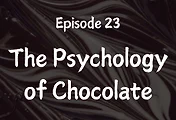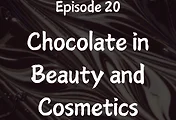Chocolate, with its rich history and complex sensory experience, has long been a source of inspiration for writers and poets. From ancient Mayan texts to contemporary novels, chocolate has played various roles in literature: as a symbol of luxury and indulgence, a metaphor for love and desire, a plot device, and even as a character in its own right. This article explores the presence of chocolate in literature and poetry across different cultures and periods, examining how authors and poets have used this beloved confection to convey deeper meanings, evoke emotions, and reflect societal values. We'll delve into the themes, symbolism, and cultural significance of chocolate in written works, tracing its journey from a sacred Mesoamerican drink to a global literary muse.

1. Chocolate in Ancient and Classical Literature
Mayan and Aztec Texts
The earliest literary references to chocolate can be found in Mesoamerican texts:
- The Dresden Codex: One of the oldest Mayan texts, mentions cacao in religious contexts
- Popol Vuh: The Mayan creation myth, references cacao as a divine food
Themes in these texts:
- Sacredness of cacao
- Association with gods and religious rituals
- Cacao as a symbol of life and fertility
Early European Accounts
As chocolate was introduced to Europe, it began appearing in various texts:
- "The True History of Chocolate" by Sophie and Michael Coe discusses early European writings about chocolate
- Spanish chroniclers like Bernal Díaz del Castillo described chocolate in their accounts of the New World
Common themes:
- Exotic nature of chocolate
- Medicinal properties
- Luxury and exclusivity
2. Chocolate in 18th and 19th Century Literature
Chocolate as a Symbol of Luxury
In 18th and 19th-century European literature, chocolate often represented wealth and refinement:
- Jane Austen's novels: Chocolate is mentioned as a luxurious beverage
- Honoré de Balzac's "Cousin Pons": Chocolate symbolizes the protagonist's refined tastes
Literary uses:
- Setting the scene for upper-class life
- Contrasting characters' social status
- Indicating changing social norms
Chocolate in Romantic Literature
Romantic poets and authors sometimes used chocolate as a sensual metaphor:
- Lord Byron's "Don Juan" includes references to chocolate's allure
- Percy Bysshe Shelley's letters mention chocolate in romantic contexts
Themes explored:
- Indulgence and pleasure
- Exotic sensuality
- Forbidden desires
3. Chocolate in Modern Literature
Chocolate as a Central Theme
Some modern works feature chocolate as a central element of the plot:
- "Chocolat" by Joanne Harris (1999)
- The plot revolves around a chocolate shop in a small French village
- Themes: Temptation, pleasure, personal freedom
- "Like Water for Chocolate" by Laura Esquivel (1989)
- Magical realism novel where emotions are infused into food, especially chocolate
- Themes: Passion, tradition, forbidden love
- "Charlie and the Chocolate Factory" by Roald Dahl (1964)
- Children's novel featuring a fantastical chocolate factory
- Themes: Morality, imagination, consequences of greed
Chocolate as Metaphor in Contemporary Fiction
Modern authors often use chocolate metaphorically:
- Toni Morrison's "Tar Baby": Chocolate imagery used to explore themes of race and identity
- Judy Blume's young adult novels: Chocolate often represent comfort and coming-of-age experiences
Common metaphorical uses:
- Comfort and nostalgia
- Temptation and indulgence
- Cultural identity and heritage
Chocolate in Non-Fiction and Memoirs
Non-fiction works have explored various aspects of chocolate:
- "The Emperors of Chocolate" by Joël Glenn Brenner: Chronicles the rivalry between Hershey and Mars
- "Candyfreak" by Steve Almond: A memoir exploring America's candy obsession, including chocolate
Topics covered:
- History and cultural significance of chocolate
- Industrial and economic aspects of chocolate production
- Personal and emotional connections to chocolate
4. Chocolate in Poetry
Classical and Romantic Poetry
While less common, chocolate appears in some classical and romantic poetry:
- "On Chocolate" by James Wadsworth (1652): One of the earliest English poems about chocolate
- References in works by poets like Alexander Pope and Samuel Pepys
Poetic themes:
- Exotic nature of chocolate
- Medicinal and stimulating properties
- Association with luxury and refinement
Modern and Contemporary Poetry
Contemporary poets have embraced chocolate as a rich subject:
- "Chocolate" by Rita Dove
- Explores the sensory experience of eating chocolate
- Themes: Pleasure, memory, indulgence
- "The Chocolate Eater" by Ruth Fainlight
- Examines the guilt and pleasure associated with chocolate consumption
- Themes: Temptation, self-control, femininity
- "Valentine" by Carol Ann Duffy
- Uses an onion as an anti-Valentine, contrasting it with conventional chocolate gifts
- Themes: Love, honesty, subversion of romantic clichés
Common poetic devices:
- Sensory imagery to evoke taste and texture
- Metaphors linking chocolate to love, desire, and comfort
- The personification of chocolate or cacao
5. Chocolate in World Literature
Latin American Literature
Chocolate holds a special place in Latin American literature, reflecting its cultural roots:
- Gabriel García Márquez's works often mention chocolate in the context of daily life and tradition
- Isabel Allende's "Aphrodite: A Memoir of the Senses" includes chocolate in sensual and culinary contexts
Themes in Latin American literature:
- Cultural heritage and tradition
- Magic and mysticism associated with cacao
- Sensuality and passion
African Literature
Chocolate and cacao appear in African literature, often in the context of colonialism and agriculture:
- Ghanaian writer Ama Ata Aidoo's works reference cacao farming
- Nigerian author Chigozie Obioma's "The Fishermen" mentions chocolate as a luxury item
Literary uses:
- Symbol of colonial exploitation
- Representation of changing economic landscapes
- Marker of globalization's impact
European Literature
Contemporary European literature often uses chocolate to explore themes of indulgence and culture:
- Joanne Harris's "Chocolat" and its sequels
- "The Particular Sadness of Lemon Cake" by Aimee Bender, while American, has a European sensibility in its treatment of chocolate and emotions
Recurring themes:
- The conflict between pleasure and restraint
- Chocolate as a catalyst for change
- Cultural attitudes towards food and indulgence
6. Chocolate in Children's Literature
Chocolate as a Reward and Temptation
In children's literature, chocolate often serves as a reward or temptation:
- "Charlie and the Chocolate Factory" by Roald Dahl: The Ultimate Chocolate Fantasy
- "The Chocolate Touch" by Patrick Skene Catling: A moral tale about the perils of overindulgence
Literary uses:
- Teaching moral lessons
- Encouraging imagination
- Exploring themes of desire and self-control
Chocolate in Educational Books
Many children's books use chocolate as an educational tool:
- "The Story of Chocolate" by Caryn J. Polin: Teaches about chocolate's history and production
- "Cocoa Ice" by Diana Appelbaum: Uses chocolate to explore geography and trade
Educational themes:
- History and cultural exchange
- Science of chocolate-making
- Global trade and economics
7. Themes and Symbolism of Chocolate in Literature
Indulgence and Guilt
Chocolate often symbolizes the conflict between pleasure and guilt:
- Represents temptation and sin in some religious-themed literature
- Used to explore themes of self-control and indulgence in contemporary fiction
Example: In Joanne Harris's "Chocolat," chocolate symbolizes freedom from religious and social constraints.
Love and Sensuality
Chocolate is frequently associated with love and sensuality in literature:
- Used as a metaphor for romantic and sexual desire
- Often features in romantic scenes and courtship rituals
Example: Laura Esquivel's "Like Water for Chocolate" uses chocolate as a vehicle for expressing repressed passion.
Comfort and Nostalgia
Many authors use chocolate to evoke feelings of comfort and nostalgia:
- Associated with childhood memories and innocent pleasures
- Used to represent emotional solace in times of stress
Example: In Marcel Proust's "Remembrance of Things Past," while not about chocolate specifically, the concept of food evoking memories is similar to how chocolate is often used in literature.
Cultural Identity and Heritage
Chocolate can symbolize cultural identity and heritage:
- Latin American literature often represents Indigenous traditions
- Used to explore themes of colonialism and cultural exchange
Example: Ghanaian writer Ama Ata Aidoo's works use cacao as a symbol of Ghana's economic and cultural history.
8. Literary Techniques in Writing About Chocolate
Sensory Descriptions
Authors often employ rich sensory language when writing about chocolate:
- Vivid descriptions of taste, smell, and texture
- Use of synesthesia to blend sensory experiences
Example: "The chocolate melted on her tongue, releasing a symphony of flavors - bitter, sweet, and mysteriously spicy all at once."
Personification
Chocolate is sometimes personified in literature:
- Given human qualities or agency
- Used to create a more emotional connection with the reader
Example: "The chocolate beckoned from the shelf, whispering promises of comfort and joy."
Metaphor and Simile
Chocolate serves as a versatile metaphor in many works:
- Compared to various emotions, experiences, or concepts
- Used to make abstract ideas more tangible
Example: "Her love was like dark chocolate - intense, slightly bitter, but ultimately rich and satisfying."
Summary of the content
Chocolate has played a diverse and significant role in literature and poetry across cultures and periods. From its earliest appearances in Mayan and Aztec texts, where it was portrayed as a sacred and divine substance, to its representation in modern literature as a symbol of indulgence, love, and cultural identity, chocolate has proven to be a versatile and evocative literary device.
In 18th and 19th-century European literature, chocolate often symbolized luxury and refinement, reflecting its status as an exotic and expensive commodity. As it became more widely available, its literary representations evolved, becoming a metaphor for sensuality in Romantic literature and a symbol of comfort and nostalgia in more contemporary works.
Modern literature has seen chocolate take center stage in novels like Joanne Harris's "Chocolat" and Laura Esquivel's "Like Water for Chocolate," where it serves as a central plot element and a powerful metaphor for freedom, passion, and cultural tradition. In children's literature, exemplified by Roald Dahl's "Charlie and the Chocolate Factory," chocolate often represents reward, temptation, and the power of imagination.
Poetry has embraced chocolate as a subject rich in sensory detail and emotional resonance. Poets have used chocolate to explore themes of pleasure, guilt, love, and memory, employing vivid imagery and powerful metaphors to convey the complex experience of chocolate consumption.
Across world literature, chocolate and cacao have been used to explore themes of cultural heritage, colonialism, and globalization. In Latin American literature, it often connects to indigenous traditions and magical realism, while in African literature, it can symbolize the impact of colonial agricultural practices.
The symbolism of chocolate in literature is multifaceted, representing indulgence and guilt, love and sensuality, comfort and nostalgia, and cultural identity and heritage. Authors employ various literary techniques when writing about chocolate, including rich sensory descriptions, personification, and metaphor, to create vivid and emotionally resonant portrayals.
In conclusion, chocolate's journey through literature mirrors its journey through human culture – from a sacred substance to a global indulgence. Its rich history, complex sensory profile, and deep cultural significance have made it a powerful tool for writers and poets, allowing them to explore a wide range of human experiences and emotions through the lens of this beloved food.
← Episode 20: Chocolate in Beauty and Cosmetics
→ Episode 22: Chocolate on Screen
Chocolate in Beauty and Cosmetics: Indulgence for Skin and Hair
Chocolate, long cherished for its delectable taste and mood-boosting properties, has found a new role in the world of beauty and cosmetics. From luxurious spa treatments to everyday skincare products, chocolate, and cocoa-derived ingredients are being harn
chocolate-world.tistory.com
Chocolate on Screen: Sweet Moments in Film and Television
Chocolate, with its rich sensory appeal and cultural significance, has long been a favorite subject in the world of film and television. From whimsical candy factories to passionate culinary adventures, chocolate has played various roles on screen: as a ce
chocolate-world.tistory.com
'Chocolate World' 카테고리의 다른 글
| The Psychology of Chocolate: Sweet Science of the Mind (2) | 2024.09.23 |
|---|---|
| Chocolate on Screen: Sweet Moments in Film and Television (2) | 2024.09.21 |
| Chocolate in Beauty and Cosmetics: Indulgence for Skin and Hair (1) | 2024.09.17 |
| Chocolate in Science Education: Sweet Lessons in STEM (2) | 2024.09.16 |
| Chocolate Festivals and Events: Celebrating the World's Favorite Treat (0) | 2024.09.16 |



